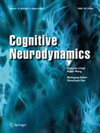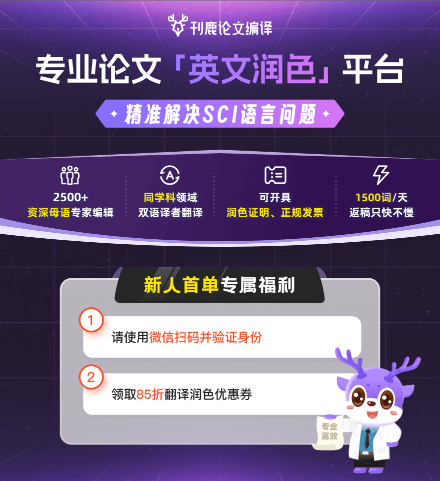
Cognitive Neurodynamics
COGN NEURODYNAMICS
期刊介绍
Cognitive Neurodynamics provides a unique forum of communication and cooperation for scientists and engineers working in the field of cognitive neurodynamics, intelligent science and applications, bridging the gap between theory and application, without any preference for pure theoretical, experimental or computational models.The emphasis is to publish original models of cognitive neurodynamics, novel computational theories and experimental results. In particular, intelligent science inspired by cognitive neuroscience and neurodynamics is also very welcome.The scope of Cognitive Neurodynamics covers cognitive neuroscience, neural computation based on dynamics, computer science, intelligent science as well as their interdisciplinary applications in the natural and engineering sciences. Papers that are appropriate for non-specialist readers are encouraged.1. There is no page limit for manuscripts submitted to Cognitive Neurodynamics. Research papers should clearly represent an important advance of especially broad interest to researchers and technologists in neuroscience, biophysics, BCI, neural computer and intelligent robotics.2. Cognitive Neurodynamics also welcomes brief communications: short papers reporting results that are of genuinely broad interest but that for one reason and another do not make a sufficiently complete story to justify a full article publication. Brief Communications should consist of approximately four manuscript pages.3. Cognitive Neurodynamics publishes review articles in which a specific field is reviewed through an exhaustive literature survey. There are no restrictions on the number of pages. Review articles are usually invited, but submitted reviews will also be considered.
认知神经动力学为从事认知神经动力学、智能科学与应用领域的科学家和工程师提供了一个独特的交流与合作论坛,弥合了理论与应用之间差距,不偏爱纯理论、实验或计算模型,重点是发表认知神经动力学原创模型、新颖的计算理论和实验结果。特别是受认知神经科学和神经动力学启发的智能科学也非常受欢迎,认知神经动力学的范围涵盖认知神经科学、基于动力学的神经计算、计算机科学、智能科学以及它们在自然科学和工程科学中的跨学科应用。鼓励发表适合非专业读者阅读的论文。提交给认知神经动力学的手稿没有页数限制。研究论文应明确代表神经科学、生物物理学、脑机接口、神经计算机和智能机器人领域的研究人员和技术人员特别广泛感兴趣的重要进展。认知神经动力学也欢迎简短的交流:报道结果的短文,这些结果具有真正广泛的意义,但由于这样或那样的原因,不能形成足够完整的故事来证明全文出版是合理的。简短的交流应该包括大约四页手稿。3.认知神经动力学发表评论文章,其中一个特定领域的审查通过详尽的文献调查。页数没有限制。评论文章通常会被邀请,但提交的评论也会被考虑。
| 年发文量 | 121 |
| 国人发稿量 | 72 |
| 国人发文占比 | 59.5% |
| 自引率 | 9.7% |
| 平均录取率 | 约50% |
| 平均审稿周期 | 平均2月 |
| 版面费 | US$3860 |
| 偏重研究方向 | 医学-神经科学 |
| 期刊官网 | https://www.springer.com/11571/?utm_medium=display&utm_source=letpub&utm_content=text_link&utm_term=null&utm_campaign=MLSR_11571_AWA1_CN_CNPL_letpb_mp |
| 投稿链接 | https://www.editorialmanager.com/cody |
质量指标占比
| 研究类文章占比 | OA被引用占比 | 撤稿占比 | 出版后修正文章占比 |
|---|---|---|---|
| 94.21% | 15.28% | 0.00% | 1.03% |
相关指数
期刊预警不是论文评价,更不是否定预警期刊发表的每项成果。《国际期刊预警名单(试行)》旨在提醒科研人员审慎选择成果发表平台、提示出版机构强化期刊质量管理。
预警期刊的识别采用定性与定量相结合的方法。通过专家咨询确立分析维度及评价指标,而后基于指标客观数据产生具体名单。
具体而言,就是通过综合评判期刊载文量、作者国际化程度、拒稿率、论文处理费(APC)、期刊超越指数、自引率、撤稿信息等,找出那些具备风险特征、具有潜在质量问题的学术期刊。最后,依据各刊数据差异,将预警级别分为高、中、低三档,风险指数依次减弱。
《国际期刊预警名单(试行)》确定原则是客观、审慎、开放。期刊分区表团队期待与科研界、学术出版机构一起,夯实科学精神,打造气正风清的学术诚信环境!真诚欢迎各界就预警名单的分析维度、使用方案、值得关切的期刊等提出建议!
预警情况
查看说明
| 时间 | 预警情况 |
|---|---|
| 2024年02月发布的2024版 | 不在预警名单中 |
| 2023年01月发布的2023版 | 不在预警名单中 |
| 2021年12月发布的2021版 | 不在预警名单中 |
| 2020年12月发布的2020版 | 不在预警名单中 |
JCR分区 WOS分区等级:Q2区
| 版本 | 按学科 | 分区 |
|---|---|---|
|
WOS期刊SCI分区
WOS期刊SCI分区是指SCI官方(Web of Science)为每个学科内的期刊按照IF数值排
序,将期刊按照四等分的方法划分的Q1-Q4等级,Q1代表质量最高,即常说的1区期刊。
(2021-2022年最新版)
|
||
| NEUROSCIENCES | Q2 |
关于2019年中科院分区升级版(试行)
分区表升级版(试行)旨在解决期刊学科体系划分与学科发展以及融合趋势的不相容问题。由于学科交叉在当代科研活动的趋势愈发显著,学科体系构建容易引发争议。为了打破学科体系给期刊评价带来的桎梏,“升级版方案”首先构建了论文层级的主题体系,然后分别计算每篇论文在所属主题的影响力,最后汇总各期刊每篇论文分值,得到“期刊超越指数”,作为分区依据。
分区表升级版(试行)的优势:一是论文层级的主题体系既能体现学科交叉特点,又可以精准揭示期刊载文的多学科性;二是采用“期刊超越指数”替代影响因子指标,解决了影响因子数学性质缺陷对评价结果的干扰。整体而言,分区表升级版(试行)突破了期刊评价中学科体系构建、评价指标选择等瓶颈问题,能够更为全面地揭示学术期刊的影响力,为科研评价“去四唯”提供解决思路。相关研究成果经过国际同行的认可,已经发表在科学计量学领域国际重要期刊。
《2019年中国科学院文献情报中心期刊分区表升级版(试行)》首次将社会科学引文数据库(SSCI)期刊纳入到分区评估中。升级版分区表(试行)设置了包括自然科学和社会科学在内的18个大类学科。基础版和升级版(试行)将过渡共存三年时间,推测在此期间各大高校和科研院所仍可能会以基础版为考核参考标准。 提示:中科院分区官方微信公众号“fenqubiao”仅提供基础版数据查询,暂无升级版数据,请注意区分。
中科院分区
查看说明
| 版本 | 大类学科 | 小类学科 | Top期刊 | 综述期刊 |
|---|---|---|---|---|
|
工程技术
2区
|
NEUROSCIENCES
神经科学
3区
|
否 | 否 | |
|
2021年12月
基础版
|
工程技术
2区
|
NEUROSCIENCES
神经科学
3区
|
否 | 否 |
|
2021年12月
升级版
|
工程技术
2区
|
NEUROSCIENCES
神经科学
2区
|
否 | 否 |
|
2020年12月
旧的升级版
|
工程技术
1区
|
NEUROSCIENCES
神经科学
2区
|
否 | 是 |
|
2022年12月
最新升级版
|
工程技术
3区
|
NEUROSCIENCES
神经科学
3区
|
否 | 否 |














